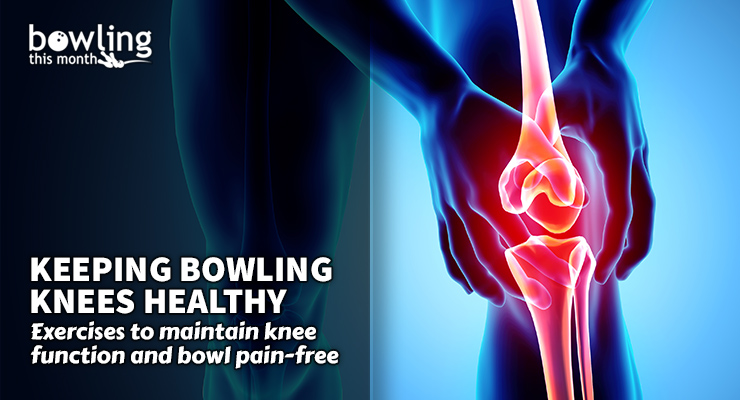Article Contents
- 1. The big no-no?
- 2. Understanding the kinetic chain
- 3. Ankles
- 3.1. Ankle mobilization drill
- 3.2. Isometric lunge with active eversion and inversion
- 3.3. Calf raise series
- 4. Knees
- 4.1. Goblet squat
- 4.2. Lateral lunges
- 4.3. Eccentric hamstring slides
- 5. Hips
- 5.1. Hip CARs
- 5.2. Clamshells
- 5.3. Hip lifts
- 6. Conclusion
Note: This article is only available to Bowling This Month subscribers.
Over the past 10 years of providing advice and training programs to the bowling community, I would say that the most common questions I get are about knee pain. I don’t think there are any bowlers who question the strain that bowling can place on the knees—or, more specifically, the knee of the slide leg.
In this article, I want to cover some strengthening exercises that can be done to keep the knees healthy. The knee is a joint and not a muscle, so when I talk about strengthening the knee, what I’m really talking about is strengthening the muscles around the knee that connect by tendons and ligaments to the joint to keep it moving efficiently.
The knee joint is a synovial joint where three bones are connected: the tibia, the patella (knee cap), and the femur. The patella sits in a groove where the tendons and ligaments from surrounding muscles act on it to move smoothly as the leg flexes and extends. The structure of the knee becomes compromised when the tendons and ligaments don’t provide enough strength and support to keep the knee hinging through extension and flexion without pain.
The big no-no?
There is one big myth I need to debunk here before I continue. The myth is this: if you have knee pain or issues, you need to avoid exercises like squats. One of the worst cycles to be stuck in is having pain in a joint or muscle and thus avoiding movement or exercises that involve it. This continues to compound the issue rather than resolve it.
Any knowledgeable physiotherapist is going to tell you that the area of pain is most often the area that needs the most strengthening exercises and movement therapy. However, many people avoid it out of fear of making the pain worse, which is a natural human response.
This leads to beliefs such as, “I have knee problems, so I can’t squat,” when squatting (with careful attention to form and ...
Already a premium member? Click here to log in.


